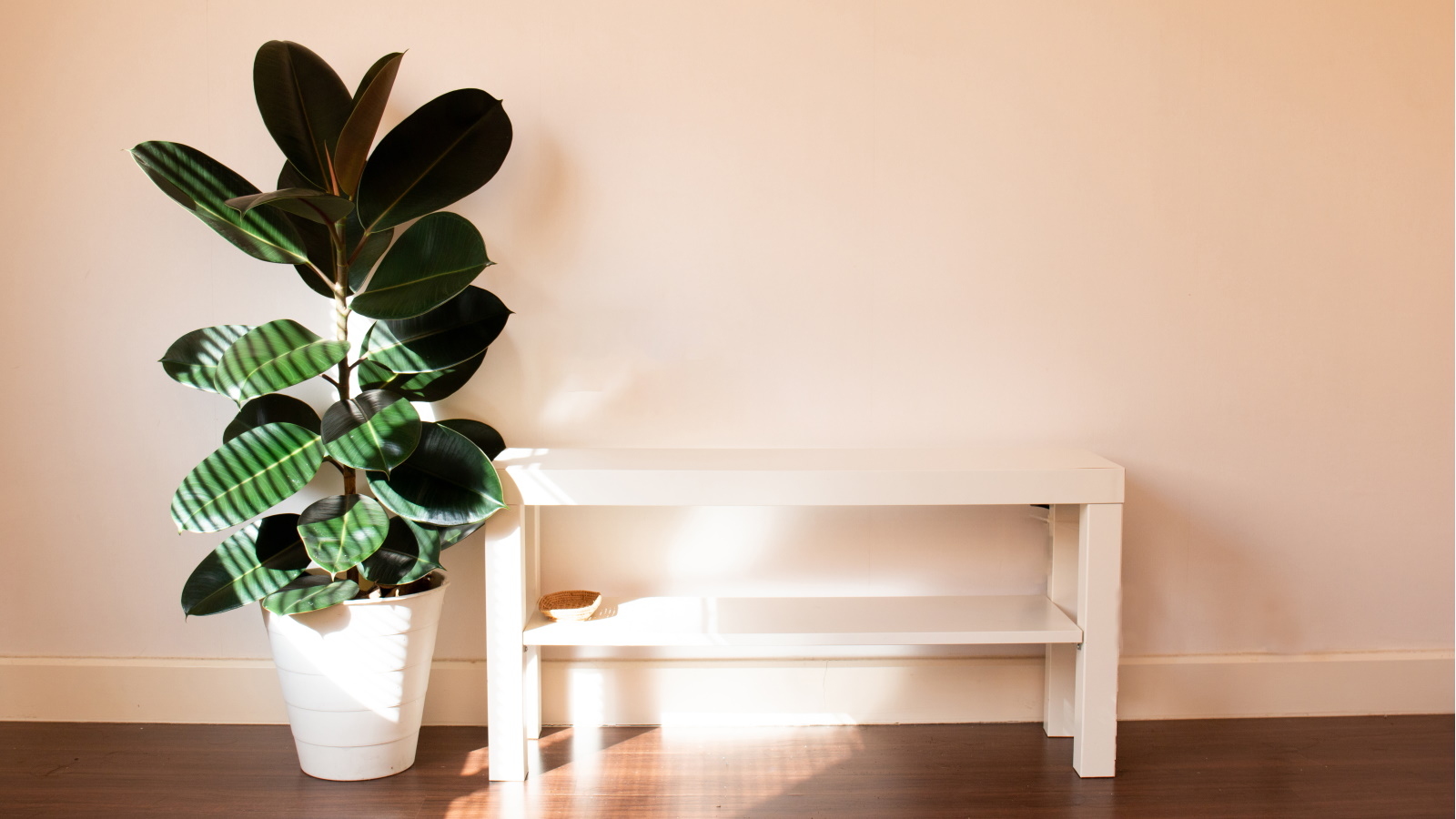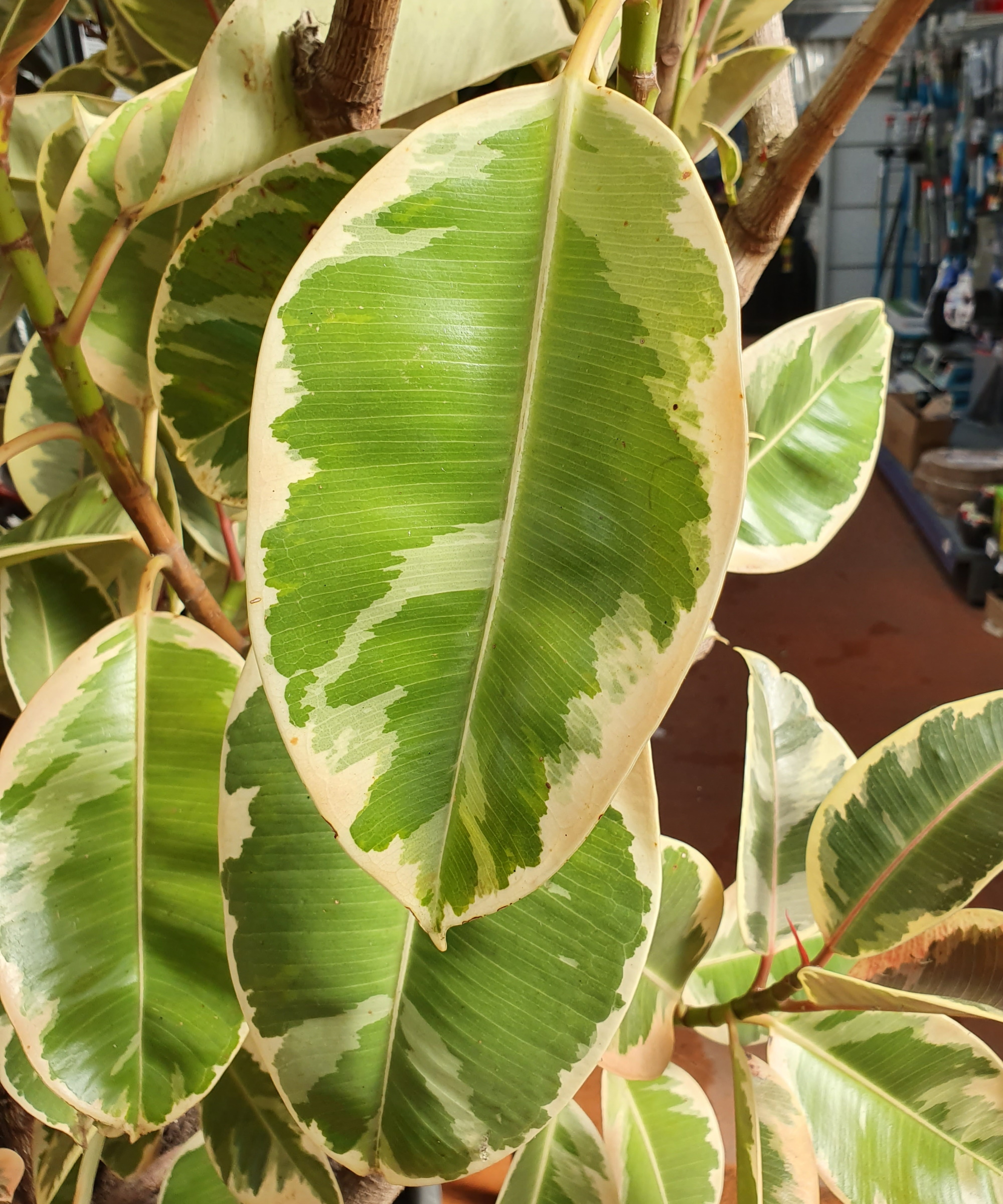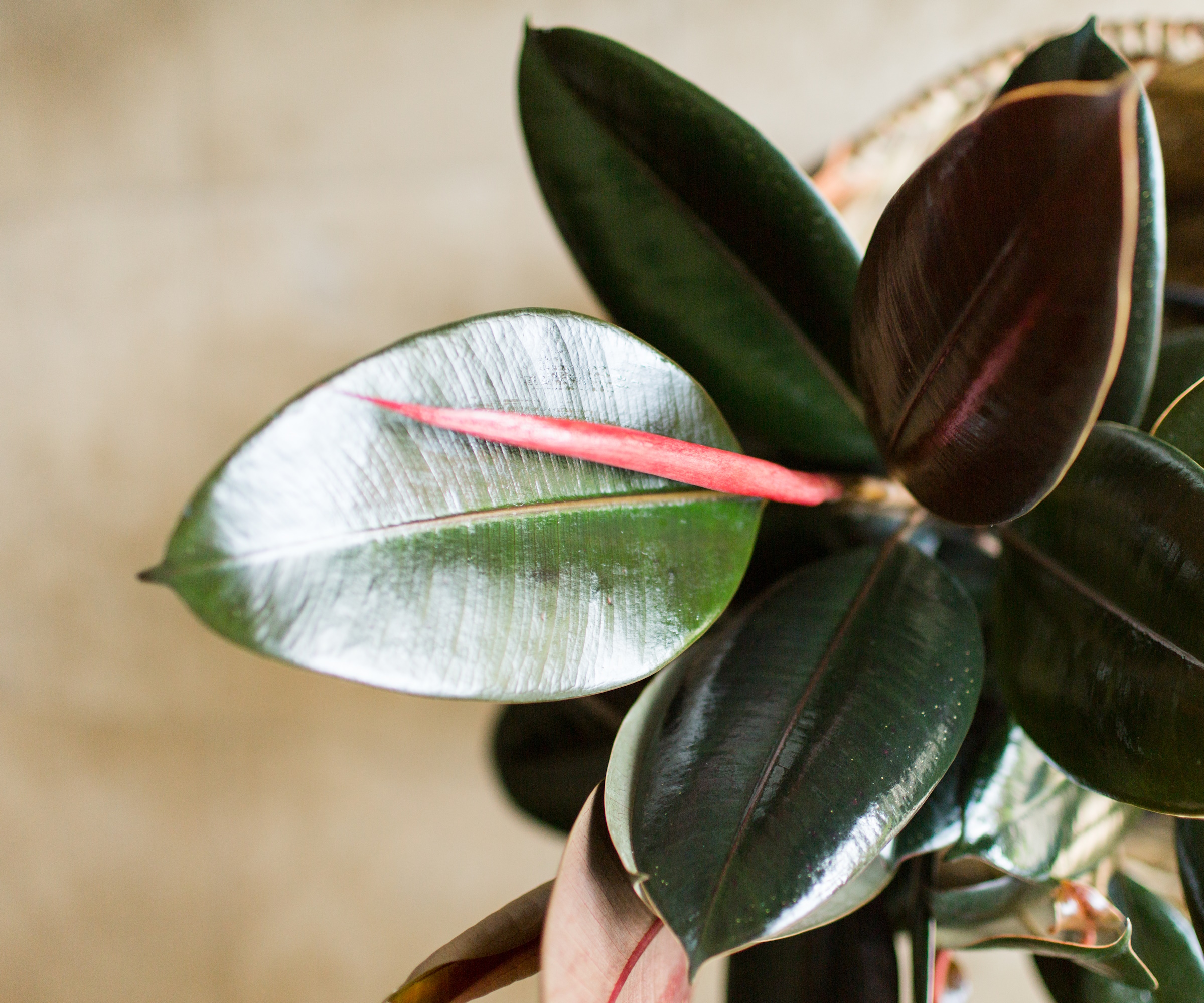How to prune a rubber plant – 2 methods for bushier and healthier growth
Taking pruners to your rubber plant can give this statement indoor plant even more impact


Not too long ago I finally got my hands on one of my dream houseplants - a variegated rubber plant. These robust indoor plants can adapt to just about any position in your home, and I personally love the variegated variety for its creamy colors and patterns. The only issue? The plant I picked up came with a few discoloring leaves at the base that needed to be tended to.
Anyone who owns a rubber plant, or Ficus elastica, will know that its showy foliage makes a real statement in any room, so it can be concerning to see your rubber plant droop or turn brown. It can feel even more daunting to think about having to take some pruners to such a beautiful plant, but I quickly learnt that giving my rubber plant an essential chop was exactly what it needed. In fact, you can also prune your rubber plant for fuller growth even if it doesn't have unhealthy foliage to begin with.
Just like pruning garden plants, there's an art to pruning houseplants correctly. But don't worry, this intimidating task is actually very simple. Here's every thing you need to know about how to prune rubber plants, with expert advice so that you can get yours looking its best.

2 ways to prune a rubber plant
Depending on what you want to achieve, you can prune your rubber plant in a couple of ways. One of the biggest pruning mistakes is not knowing how or when to prune your plant and no matter which way you're pruning your rubber plant, failing to do so correctly could cause problems for its future growth. But look no further, here are two different ways to prune a rubber a plant with expert tips to do it successfully.
How to prune a rubber plant with damaged leaves

The first reason you might need to prune your rubber plant is because it has dead or damaged foliage, like mine did. Choosing not to remove these leaves can be detrimental because the plant is directing energy to unhealthy foliage, rather than to new growth.
'Pruning helps to remove any dead foliage which will help to keep your rubber plant looking beautiful and reduce pest or disease strongholds,' notes Paris Lalicata, head of plant education and community at The Sill.
Luckily, when pruning your rubber plant in this way there's no wrong time to do it. 'When pruning off any dead or lackluster foliage on the plant, you can do so whenever it’s needed,' notes Paris.
Design expertise in your inbox – from inspiring decorating ideas and beautiful celebrity homes to practical gardening advice and shopping round-ups.
You'll need essential gardening tools to get this task done, and I personally like to use these gardening scissors from Amazon when tending to my houseplants because they're smaller and easier to use for precise cuts. 'A fine-tip pruner could be used to prune off dead leaves or new growth points at the top that are still soft,' suggests Paris.
To prune away unwanted foliage, simply use your scissors to cut at the base of the stem where it attaches to the trunk of your rubber plant - also known as the petiole. This will instantly leave your rubber plant looking healthier.
'You want to prune slowly and judiciously, so that you don’t over prune and disfigure the plant,' advises Julie Bawden-Davis, indoor plant expert at Healthy Houseplants. 'You also don’t want to prune more than a third of the plant at one pruning, as you could send the plant into shock,' she adds.

Paris has been at The Sill for five years, looking after Plant Education and Community. She is a self-taught plant expert with over 10 years of experience growing houseplants and is currently working on becoming a certified sustainable gardener. She maintains an indoor garden of over 200 plants in the north-east of the USA and is passionate about making plant care more digestible for budding plant parents.

Julie Bawden Davis is a garden author and University of California Certified Master Gardener, who has written several gardening books, including Indoor Gardening The Organic Way. In addition to running HealthyHouseplants.com, she shares indoor gardening advice on her YouTube channel @HealthyHouseplants.
How to prune a rubber plant to encourage branch growth

The second reason for pruning a rubber plant is to encourage bushier growth. When rubber plants first establish, they form one main trunk which leaves grow from, which is why many call them rubber trees. However, if you want your tree trunk to have branches, you can prune your rubber plant in a specific way.
'You’ll want to make a cut at an inter-node, which is the space between two nodes (or leaves),' says Paris. 'This should encourage the tree to branch out by creating two lateral buds on the trunk as long as the plant receives optimal care,' she adds.
The smaller pruning scissors you use for removing damaged leaves might not work well for this type of pruning. 'If you’re pruning areas on your rubber tree that are woody, it might be better to use pruners with a larger blade,' suggests Paris. Try using these pruning shears from Amazon.
The best time to prune your rubber plant for branch growth is during spring and summer. 'This is when your rubber tree is actively growing,' Paris says. If you are propagating a rubber plant from cuttings, you should also aim to do this in spring and summer when active growth happens.
After pruning, you should give your rubber plant some extra care. This includes providing it with plenty of indirect light, maintaining a consistent moisture level and even fertilizing it. You can use this all-purpose indoor plant food from Amazon to feed your rubber plant, but only do so when your plant is actively growing. Take care to also clean your garden tools after use to ensure you don't pass along any pests or diseases between plants.
FAQs
What is the sticky sap on my rubber plant?
Rubber plants, or Ficus elastica, are loved for their bold leaves. However, you might notice a white sticky sap emerge from the foliage when pruning your rubber plant.
'Rubber plants contain a latex sap that can be irritating to people who have sensitive skin or have a latex allergy,' says Paris Lalicata, head of plant education and community at The Sill.
You can take precaution by wearing these gardening gloves from Walmart when pruning your rubber plant.
I'm so pleased I finally have a rubber plant in my collection, and even happier that I pruned away the damaged foliage because it's been thriving ever since. It can seem daunting, but don't be shy to cut away at your rubber plant as needed to encourage healthier growth.
If you want to have even more rubber plants in your home but are running out of floor space for large plants, you might want to opt for a baby rubber plant - a smaller version that makes a good addition to windowsills.

Tenielle is a Gardens Content Editor at Homes & Gardens. She holds a qualification in MA Magazine Journalism and has over six years of journalistic experience. Before coming to Homes & Gardens, Tenielle was in the editorial department at the Royal Horticultural Society and worked on The Garden magazine. As our in-house houseplant expert, Tenielle writes on a range of solutions to houseplant problems, as well as other 'how to' guides, inspiring garden projects, and the latest gardening news. When she isn't writing, Tenielle can be found propagating her ever-growing collection of indoor plants, helping others overcome common houseplant pests and diseases, volunteering at a local gardening club, and attending gardening workshops, like a composting masterclass.